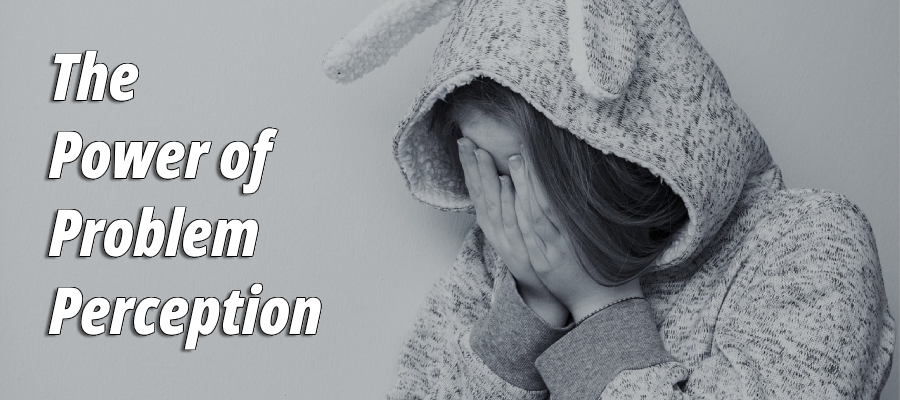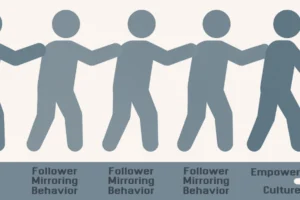The Power of Problem Perception
The word “problem” has a few definitions. What most people associate with “problem” is a situation, matter, or person that is hard to deal with or understand. However, if this is you, I would challenge you to see the “problem” as nothing more than a question to be considered, solved, or answered. This perspective reframes challenges as opportunities for growth and innovation.
I say, adopt a scientific mindset. For example, in science, a problem is simply a statement requiring a solution or perhaps an invitation to experiment and explore. When we approach problems this way, we shift from a mindset of frustration and limitation to curiosity and possibility. This approach encourages creative thinking, resilience, and a willingness to engage with the unknown, which helps us transform perceived obstacles into stepping stones toward greater understanding and accomplishment.
Of course, I believe problems shouldn’t be seen as hurdles to overcome. I say that because they typically offer a sense of purpose and direction. That is highly valuable for any leader. Think about it! Leadership inherently serves a purpose, and at its core, this purpose revolves around problem-solving. Hence, you can’t be an effective leader without having some level of comfort regarding problems.
It’s essential to recognize that for leaders, personal or organizational life is perpetually intertwined with challenges and obstacles. As such, effective leadership demands the ability to confront and overcome these challenges and the foresight to anticipate them. Of course, this involves cultivating a deep understanding of the environment, the needs and aspirations of the people involved, and the dynamics at play.
Leaders who excel in problem-solving can turn difficulties into opportunities for growth, innovation, and positive change. They inspire confidence and rally their teams to work collaboratively towards solutions, creating a culture where challenges are met with enthusiasm and resilience. In this way, problems become catalysts for learning, adaptation, and progress, shaping leaders into visionaries capable of guiding others through the complexities of life and work. Do you know what that sounds like to me? Purpose!
“Purpose” is frequently discovered within the problem itself. Similarly, the most accomplished individuals are those who not only recognize and address challenges but also excel in articulating the problems they encounter, outlining their strategies for resolution, and effectively implementing solutions. Granted, one could spend a lifetime trying to perfect that, but that is the reality nonetheless.
Regardless, this process of identifying, analyzing, and resolving issues is not just a mechanical exercise; it’s a journey of self-discovery and growth. It demands creativity, critical thinking, and the ability to communicate clearly and persuasively. By engaging deeply with these supposed problems, these individuals gain insights into their own values, strengths, and areas for development. They also develop empathy and a deeper understanding of the people and the world around them. The key is in the contrast.
This holistic approach to problem-solving leads to effective and innovative solutions and fosters personal and professional development. In essence, pursuing purpose through problem-solving becomes a powerful means of shaping one’s identity, building character, and leaving a meaningful impact in various spheres of life. However, again, this requires one to be comfortable with problems enough that they no longer see them as problems but as opportunities.
Understand that you are more likely to identify problems (and solutions) if you become comfortable with problems in the first place. After all, you cannot solve problems you actively ignore or avoid. Effective problem-solving begins with problem identification. In a bit of a twist, this requires knowledge about the subject at hand and a willingness to delve into uncomfortable territories with confidence. Similarly, a skilled problem-solver must unearth issues often intentionally obscured by others, engage in candid discussions about potential solutions, and help others see how problems are not roadblocks but opportunities for growth and improvement. That’s a big part of real leadership!
This mindset shift is crucial for fostering a proactive approach to challenges. It involves a keen observational skill to notice subtle cues and underlying issues that might not be immediately apparent. Once a problem is identified, the next step is to thoroughly understand its nature and scope. This demands an open-minded, analytical approach, allowing for the consideration of various perspectives and potential causes.
A skilled problem-solver seeks to gather relevant information, ask probing questions, and engage with diverse viewpoints to fully comprehend the issue’s complexity. Essentially, they are going all-in on this potential “negative.” However, by embracing this approach, problems are not just resolved on the surface level; they are dissected to their core, providing insights that lead to sustainable and innovative solutions. In this way, effective problem-solving becomes a transformative process, turning challenges into valuable lessons and driving continuous improvement and excellence.
Understand the difference here. We are talking about tackling genuine issues and seeking authentic resolutions. This guidance is not about altering our view of the problems to make them seem more tolerable and it’s definitely not seeking information to support our misconceptions. Instead, it’s about adjusting our perspective on these challenges so that we actually solve them and improve the situation. To do this effectively, it’s essential to embrace a realistic and optimistic mindset while being entirely comfortable with the reality of the problem faced.
Do you want to be right, or do you want to be accurate? Realism allows us to acknowledge the full extent and complexity of the problems, avoiding any sugarcoating or oversimplification. On the other hand, optimism is crucial in fueling our drive to seek out innovative solutions and believe in the possibility of positive change. Combining these two approaches empowers us to confront the issues head-on and proactively create meaningful and lasting improvements. The kicker here is that if you recognize that your life is nothing short of a series of problems and that your success hinges upon your ability to solve those problems, you begin to see problems as opportunities to advance your life, which provides a great sense of positive vibes. This balanced perspective is critical to transforming challenges into opportunities for growth and advancement.
Of course, addressing problems is rarely straightforward. True problem-solving often involves a degree of failure. Therefore, leaders must develop a close relationship with both failure and challenges, cultivating resilience and authenticity. They need to confront situations head-on, resisting the urge to succumb to comforting yet misleading narratives that downplay the seriousness of issues. Again, we can be “right” and overemphasize emotion or face the problem and appeal to accuracy.
Embracing this reality, leaders should foster an environment where failure is seen not as a setback but as a vital part of the learning process. This approach encourages experimentation, risk-taking, and perseverance. From an organizational standpoint, leaders need to demonstrate vulnerability and openness about their failures, setting a precedent that it’s okay to make mistakes as long as they are used as stepping stones for growth. Doing so builds trust and creates a culture of honesty and continuous improvement.
I should also mention that leaders must be adept at discerning the lessons each failure offers, using these insights to refine strategies, enhance decision-making, and better prepare for future challenges. By treating problems and failures as integral components of the journey toward success, leaders develop their own resilience and authenticity and inspire those around them to approach difficulties with courage, creativity, and an unwavering commitment to progress.
Become the Expert
Ideally, navigating all this effectively demands a specific kind of expertise. However, the concept of “expertise” is often misunderstood or misconstrued as something it really is not. I’ll be blunt and say that genuine expertise is not a static achievement but a dynamic process. My students hear me say it all the time: graduation is not the end of the journey; it’s the beginning. Expertise materializes when individuals dedicate themselves to lifelong learning and becoming perpetual students.
This is crucial to understand because relying solely on existing knowledge can severely limit one’s ability to tackle new and evolving problems. I want you to also understand that ceasing to learn is the foundation of stagnation. Similarly, in my opinion, when individuals label themselves “experts,” they risk halting their intellectual and professional growth. Can you guess what happens next?
In reality, true experts are those who continuously seek to expand their horizons, recognizing that there is always more to know and understand. They embrace the notion that every situation, every problem, and every interaction is an opportunity to learn something new. This mindset fosters adaptability, innovation, and a deeper comprehension of the field’s complexities, making it easier to solve future problems.
Real experts are not just a knowledge repository; they are active learners, critical thinkers, and creative problem-solvers. They remain curious and humble, aware that information and knowledge are ever-changing and that today’s solutions may not suffice for tomorrow’s challenges. At the same time, they are acutely aware of the Dunning-Kruger Effect and see overconfidence as a warning sign of ignorance. Of course, the key is in the contrast, and like much of what we find in leaderology, the benefit is often paradoxical. By prioritizing ongoing learning and development, they ensure that their expertise remains relevant and effective, enabling them to provide valuable insights and make meaningful contributions in their respective fields. In other words, you become the perpetual expert by being a perpetual student.
What We Do Versus What We Are
With these ideas in mind, it might benefit us to consider another concept. I believe that leaders need to understand the distinction between identity and action. There is a difference between what I am and what I do. This is vital for leaders. For example, I identify as a ‘leaderologist‘ – a professional in the field of leadership, equipped with multiple degrees, experience, and a wealth of knowledge on various related topics. However, that is what I am; it’s not what I do. We could do the same with my health science background, where I am a research scientist. Again, that’s not what I do.
What I actually do is identify and resolve complex challenges for individuals and organizations. In health science, my active role is to identify and bridge gaps in health research and care. Note the difference, but also understand how one feeds the other. My identity as a leaderologist or health scientist merely informs and enhances my problem-solving abilities in the roles that I have chosen. Understanding this distinction enables us to navigate our roles with clarity and purpose while preventing the conflation of our professional identity with the entirety of our existence.
This awareness is critical in leadership, where the risk of being consumed by a role or title is high. By differentiating between identity and action, leaders can maintain a healthy balance, ensuring that their expertise and experience serve as tools for effective action rather than becoming constraints or sources of ego. This perspective encourages leaders to stay grounded, focused, and adaptable, enabling them to respond effectively to various situations without losing sight of their broader goals and values. It also fosters a culture of humility and continuous improvement, as leaders recognize that their professional identity is ever-evolving and shaped by their ongoing actions and decisions and their ability to solve the problems placed before them. Ultimately, this distinction between identity and action is key to effective, authentic, and sustainable leadership.
The irony of the insights I’ve shared is striking: many people equate leadership merely with holding a position of authority, mistaking the essence of true leadership. Their understanding often stems from superficial sources like LinkedIn memes rather than in-depth study or experience. Rather than outcome-oriented accuracy, emotions frequently drive decisions, leading to an aversion to problem-solving. Problems are seen as negative hurdles, not growth opportunities. Similarly, education is viewed as a burdensome task, with the attainment of a diploma mistakenly seen as the end of learning. These misguided attitudes likely explain why so many feel overwhelmed by problems instead of recognizing opportunities, feel directionless instead of purposeful, and feel confined instead of empowered. And there you go. We have to know the difference to be the difference.
Did you enjoy this article? You might also like my article titled “The Importance of Skill Development.”




